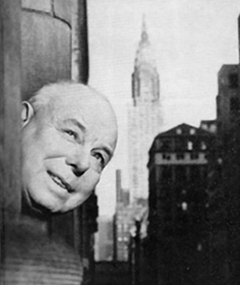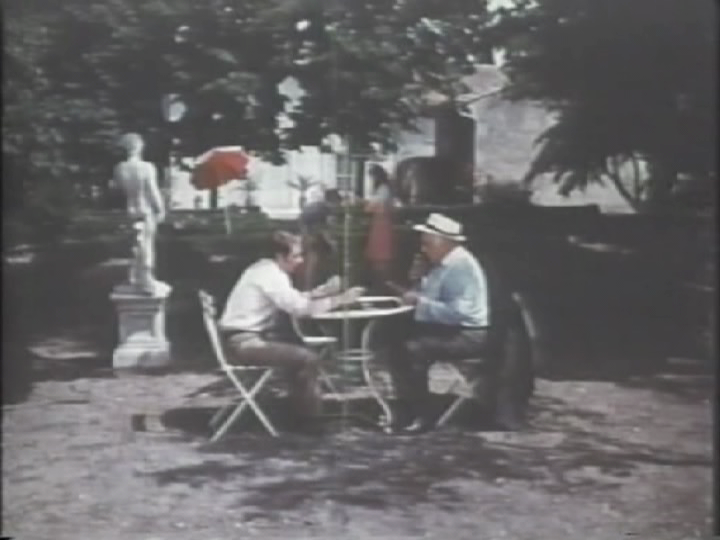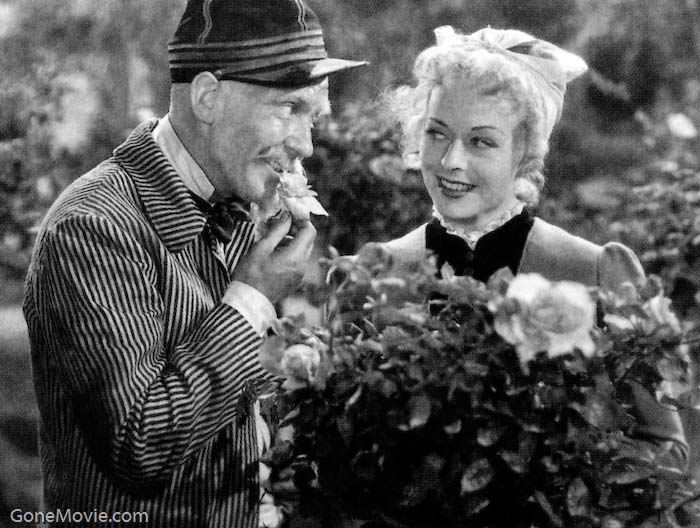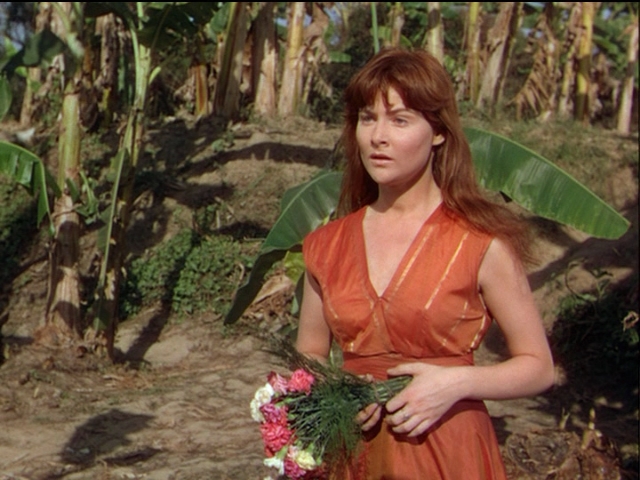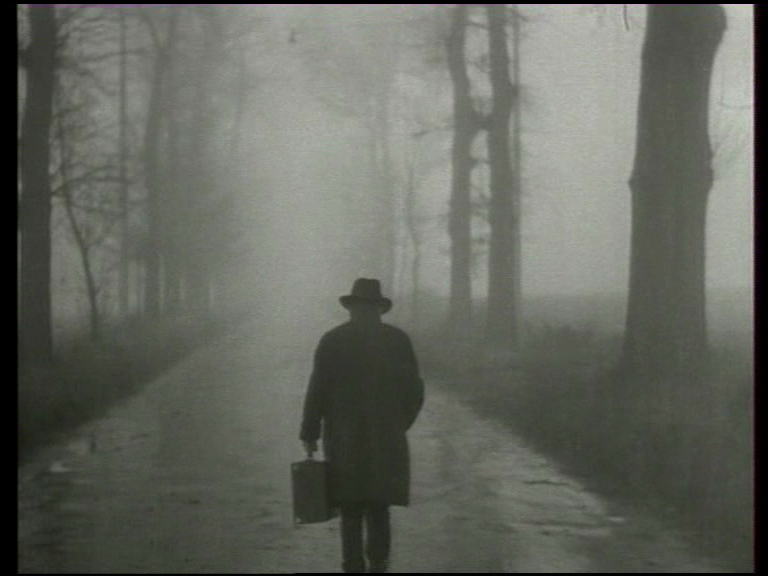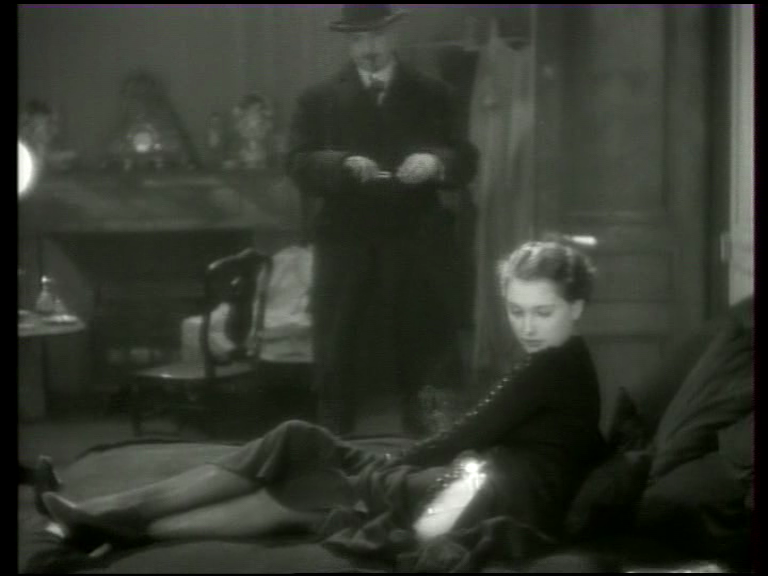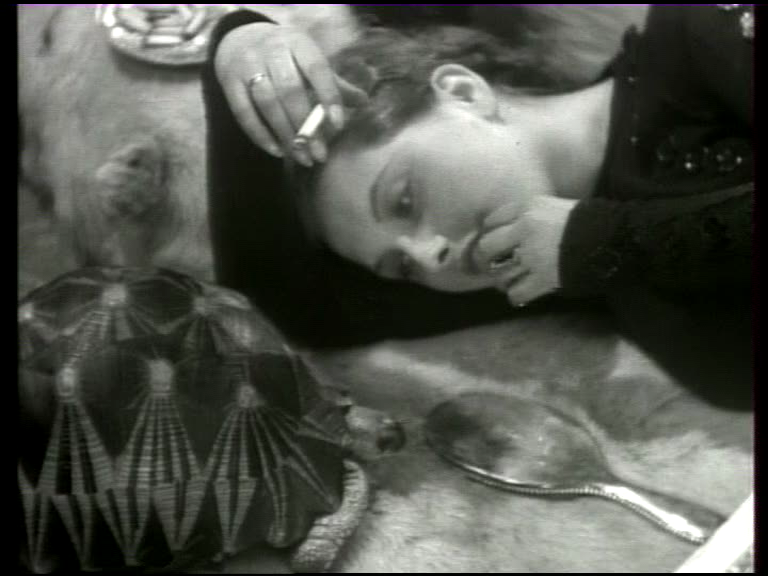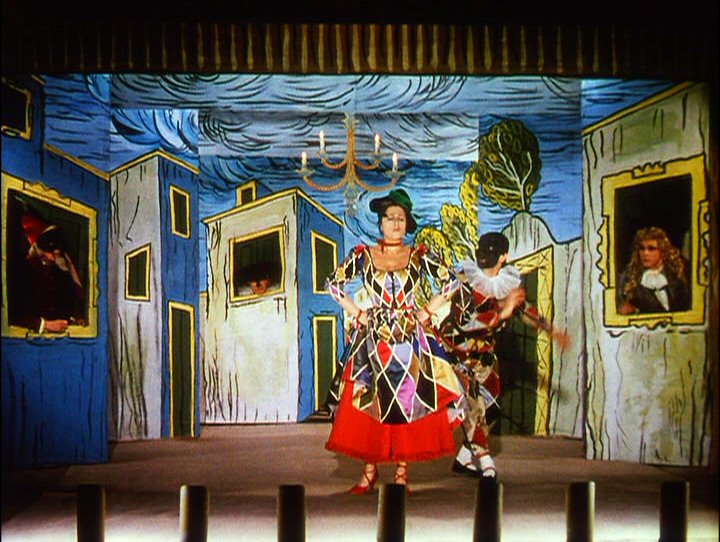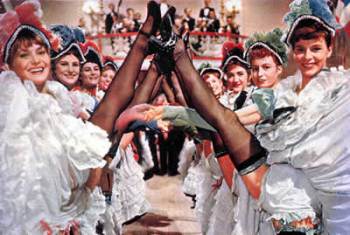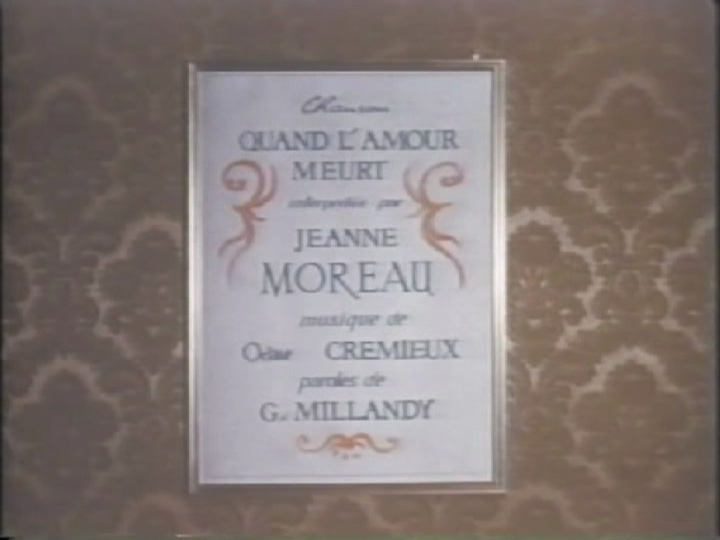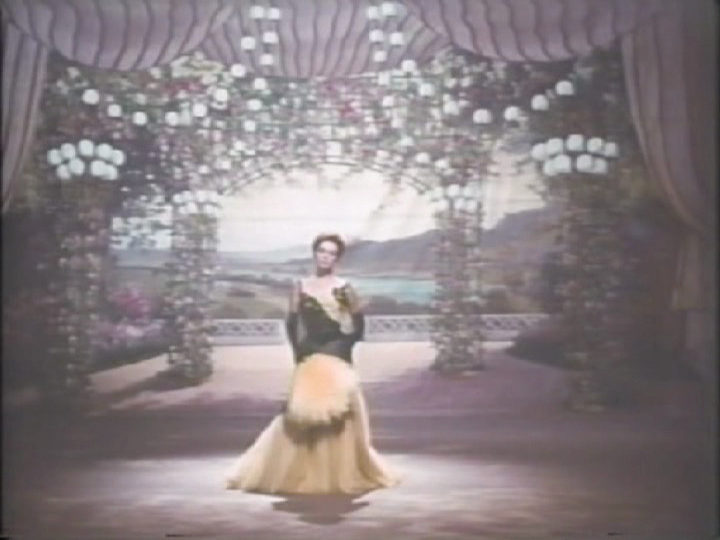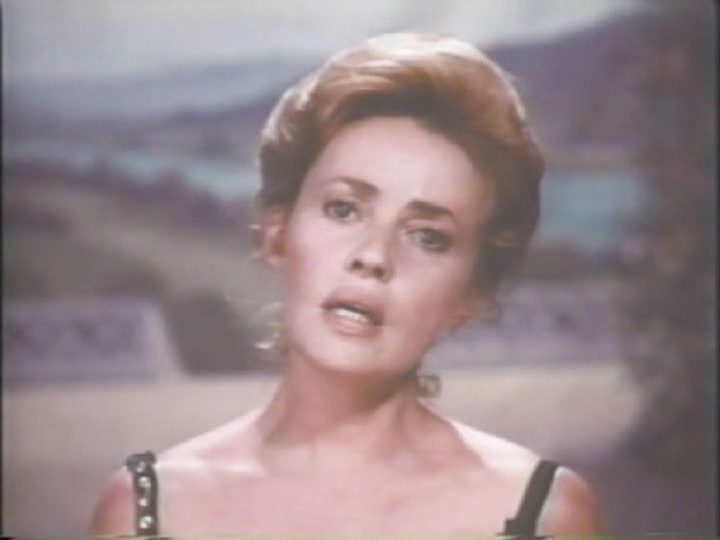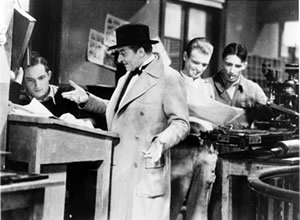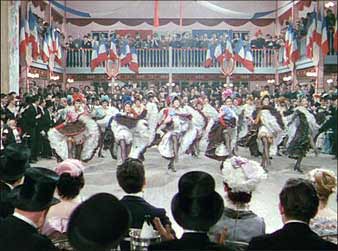From Film Comment (May-June 1976). For much, much more about Renoir, go here. — J.R.
JEAN RENOIR BY ANDRE BAZIN; translated by W. W. Halsey and William H. Simon. Delta Books, 1974. $3.25, 320 pages, illustrated, index.
JEAN RENOIR BY RAYMOND DURGNAT University of California Press, 1974. $16.50, 429 pages, illustrated, index.
JEAN RENOIR: Essays, Conversations and Reviews BY PENELOPE GILLIATT McGraw-Hill, 1975. $2.95, 156 pages, index.
MY LIFE AND MY FILMS BY JEAN RENOIR; translated by Norman Denny. Atheneum, 1974. $10.00, 287 pages, illustrated, index.
REVIEWED BY JONATHAN ROSENBAUM
“. . . Renoir directs his actors as if he liked them more than the scenes they are acting and preferred the scenes which they interpret to the scenario from which they come. This approach accounts for the disparity between his dramatic goals and the style of acting, which tends to turn our attention from these aims. This style is added to the script like rich paint liberally applied to a line drawing: often the colors obscure and spill over the lines. This approach also explains the effort required to enjoy half the scenes Renoir directs. Whereas most directors try to convince the viewer immediately of the objective and psychological reality of the action and subordinate both acting and directing to this end, Renoir seems to lose sight of the audience from time to time. His players do not face the camera but each other, as if acting for their personal pleasure. One senses that they become their own private audience, enjoying little inside jokes among themselves.” — André Bazin
“One might define Renoir’s art as a classicism which is sufficiently realistic to grant that its formality is a continuously shifting balance of impulses. Or as a realism sufficiently sophisticated to grant that masks, games, dreams and polite hypocrisies are not only an evasion of life, but that part of it which we create. Or as a romanticism which accepts and understands that the truth of a feeling lies not primarily in a first fine careless rapture which time or compromise dilute and debase, but equally in a certain contemplation, dissimulation, detachment, and even conviction, provided that withdrawal, whether weak or ironic, leaves one as generous towards others as towards oneself and as astringent towards oneself as towards others. For life is a continuing dance, not one simple saving or damning leap.” — Raymond Durgnat
“During the days we spent together talking, Renoir usually wore a tweed jacket and old leather moccasins – with a tweed cap when we went out — and he always had a pen clipped in his jacket pocket.” — Penelope Gilliatt
“The saving grace of cinema is that with a little patience, and with love, by avoiding conventional make-up and taking liberties with orthodox lighting, we may arrive at that wonderfully complex creature which is called Man.” — Jean Renoir
A central aspect of Renoir’s art, and one which anticipates an important strain in contemporary modernist narrative cinema, is the inscription of the experience of making a film onto the illusionist experience of watching one. Bridging the sense of play and chance that determines the conditions of both experiences, this essentially “bifocal” vision guarantees some elements of documentary behind every fiction, a distinguishable counter-line intertwined around each thread in a plot which makes the film a compromise between theory and metaphysics on the one hand, the vicissitudes of shooting on the other.
Not so much art versus life as two kinds of art, or two kinds of life, it is an attitude and method that thrives on confusions and fluctuations of meanings; pre-1968 Godard, post-1965 Rivette and (to a lesser extent) Altman during the past couple of years all partake of this tradition in one manner or another, and thereby extend the legacy of Renoir more plausibly than the humanism of a Milos Forman or a Truffaut. For the Renoir novices who stick with GRAND ILLUSION, THE RIVER, the illusionist side of A DAY IN THE COUNTRY and THE RULES OF THE GAME, and the final sketch of THE LITTLE THEATRE OF JEAN RENOIR (in isolation from or in opposition to the preceding three), the ambiguity of the rest generally becomes scaled down to conventional literary values perceived on a static surface. But any Renoir critic worth his salt begins with the assumption that the director’s so-called “realistic” bias is never as simple as it first appears.
For Leo Braudy — whose book on Renoir I reviewed perhaps overharshly in these pages some three years ago, concentrating on its literary-thematic methodology but neglecting to pay proper heed to its conscientious thoroughness (it contains, among other things, the most accurate and detailed Renoir filmography available in any language) — this aspect is treated in terms of the director’s dialectic attitudes toward (and uses of) “nature” and “theater.” For Raymond Durgnat, moving like quicksilver through the same oeuvre, it becomes highlighted through the very manner of the critic’s tireless and multilayered examination, in which the films themselves become only one part of a complex involving a sociopolitical and cultural context, a set of shooting conditions, a series of other critical responses, and a speculative universe in which hypothetical variants of the films are also considered. And it might be argued that the most significant remaining value of André Bazin’ s posthumous volume on Renoir — an awkward paste-up job of plot synopses, tentative scribblings, and a few interesting ideas about the cinéaste that are endlessly reiterated more often than developed — is the pioneer work done there, however glancing or unsustained, in sketching the bare bones of this sphere of interest, above all in the chapter on “The French Renoir.”
Like the historian C. Vann Woodward, Bazin conveys intellectual authenticity through his scrupulous care in anticipating and even pursuing those counterarguments which challenge his central thesis. Thus his defense of realism in Renoir recurs time and again through praise of real or implied cracks in the illusionist surface: the use of extras at the Pont des Arts in BOUDU SAVED FROM DROWNING, the courtyard pans in THE CRIME OF MONSIEUR LANGE, the camera getting “trapped in a corner” in THE RULES OF THE GAME (although Bazin regrettably neglects to pinpoint precisely when and where this happens), and the theatricality and artificiality of THE DIARY OF A CHAMBERMAID. Arguing that “There is no point in rendering something realistically unless it is to make it more meaningful in an abstract sense,” Bazin interprets all but the final example as triumphs of realism, while the virtues of THE DIARY are tentatively described as exceptions to his theory.
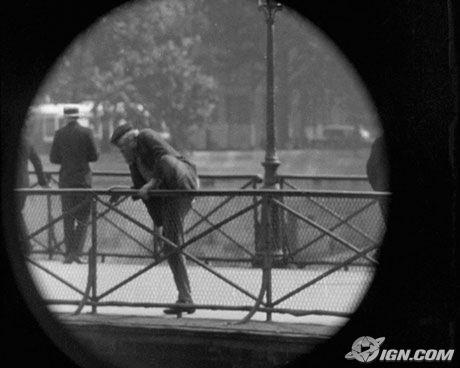
Unfortunately, this theory seems to be jettisoned entirely when Bazin arrives at THE RIVER, where “the screen no longer exists” and “simply disappears in favor of what it reveals” — a point at which the film critic also implicitly disappears, having made himself superfluous — and the movie is celebrated along with THE BICYCLE THIEF and THE DIARY OF A COUNTRY PRIEST (!) for contributing to “the transparency of the medium,” an assumption taking us back to Square One and illusionistic innocence: Pristine Cinema before the Fall. Since this “transparency” is presumed to be the “culmination” of the realism in THE RULES OF THE GAME, one is left with the uncomfortable conclusion that “realism” merely stands for everything that Bazin happens to like in a film — an all-purpose label that launches the possibility of serious investigation in some cases, and furnishes the excuse for incense-burning in others. It is characteristic of the reactionary bent of much of mainstream criticism today that Bazin should be worshiped for the most archaic parts of his theory while many of his most useful insights are left hanging, more or less where he left them. That this artificial conglomeration of notes toward a study of Renoir has been widely regarded as an occasion for further incense-burning only demonstrates that the values of transparency and mystification by and about Bazin are largely what continue to enshrine in him in the pantheon of the academy.
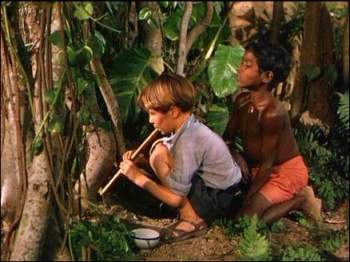
If the Bazin book is spotty, Raymond Durgnat’s nonstop marathon winds up including so much that the brain starts to boggle well before one even passes the midway point (which, strictly and mathematically speaking, comprises a discussion of the Fascist implications in LA TOSCA). Often exasperating in its wayward tangents, approximate or misleading in many of its plot summaries, and occasionally bordering on the unreadable in its increasing accumulation of cross-references to films, characters’ names, and related data, it is still undoubtedly the most sophisticated book about Renoir to have appeared to date — certainly not the best written or the most reliable (significantly, Durgnat often fails to clarify which films or plays he hasn’t seen), but probably the richest in ideas and the most stimulating, extending the method of The Strange Case of Alfred Hitchcock to explore the sort of multifaceted complex described above.
As with Manny Farber, a rich imagination is at once the curse and the boon of Durgnat’s method, which can spell out the specifics of a sequence imprecisely but still be endlessly suggestive and perceptive about the overall drift, in part because of the open-ended flow of the writing. In Durgnat’s case, this impulse may seem to take him too far afield when he starts constructing alternate versions of the films involved (e.g., a Sternberg-directed version of THE GOLDEN COACH, recasting Pierre Renoir as Nenette in PICNIC ON THE GRASS), but this nonetheless has the salutary overall effect of treating the works as compromises between aspirations and circumstances rather than as supposedly ideal Platonic models: “Ours is, after all, an era of outer-direction, of multi-media, of one hundred and one forms of social interaction and teamwork, not all of which are as debilitating as critical theories, hankering after romanticism, too easily imply.”
In this respect and others, Durgnaf s value is largely that of a corrective, supplement, and challenge to other critics, and the best things in the present work are usually miles away from what one would expect to find in Bazin, Cauliez, Leprohon, or Braudy: a thorough analysis of the social and political background of THE CRIME OF MONSIEUR LANGE, along with a careful consideration of Prévert’s central contribution (which leads to the delightful invention of Prénoir and Rêvert); the first and only attempt so far at a detailed analysis of the extraordinary LA NUIT DU CARREFOUR, which Andrew Sarris has unaccountably compared unfavorably to Delannoy’s Simenon adaptation, and which Durgnat justly identifies as (perhaps) “Renoir’s most strangely beautiful film”; a blistering account of Truffaut’s defeatist and authoritarian politics, as revealed in his own readings of Renoir’s films and reflected in his own films; a persuasive defense of THE SOUTHERNER’s naturalistic limitations in relation to James Agee’s criticism of them; a brilliant summation of the principles linking the luminous trilogy of THE GOLDEN COACH, FRENCH CANCAN, and ELENA ET LES HOMMES (“Show-business is sad because a concomitant of stardom is the renunciation of life; show-business is happy because it’s an apotheosis of life; politics is only a very dangerous form of show-business” — three statements, incidentally, which add up to the starting point of NASHVILLE); and conscientious discussions of Renoir, My Father and The Notebooks of Captain George.
Not one of Durgnat’s sixty-four chapters is in any respect definitive, yet all are informed by the alertness of his mercurial intelligence. If anything seriously rankles about this mammoth production apart from its ludicrous price, this is the extraordinary job of non-editing that has been perpetrated on it by the publisher. Durgnat has already admitted in print that he can’t proofread; apparently the editors at University of California Press can’t, or don’t want to, either. To cite one instance out of dozens, wasn’t it clear to anyone in the establishment that the author of “The Strange Case of Dr. Jekyll and Mr. Hyde” isn’t spelled Robert Lewis Stephenson?
If Durgnat’s book is probably the best on Renoir to have appeared in any language, Penelope Gilliatt’s has the less definitive status of being only the worst in English — although as a book on a major director, it is difficult to recall any in recent years that is more unabashedly insubstantial. Over seventy-odd pages of undernourished text, we get an introductory chapter, a chatty Profile, capsule reviews of eleven sound films, and then, to round out the illusion of a book, sixteen familiar stills, a filmography, and index. It’s the kind of throwaway production where — to trace the route backward — Bresson and Cartier-Bresson get confused in the index, the filmography blithely repeats or supplements most of the howlers in the Bazin book (1), and the mini-reviews mix unacknowledged borrowings from Bazin himself (2) with plot summaries, skim-job notations (“Jacques Prévert wrote the screenplay” of THE CRIME OF MONSIEUR LANGE — in case we don’t want to look it up in the filmography — thereby disposing of his contribution), and other New Yorkerish habits apparently designed to make readers feel more literate (e.g., writing “360° shot” as “three-hundred-and-sixty-degree shot”).
To its credit, the Profile does at least give us a few odd pieces of information and Renoir talk not readily available elsewhere, and certainly Gilliatt conveys an unstinting admiration for Renoir the man and Renoir the director — usually in that order — throughout, even if too much of this takes the form of Funny Things He Said to the Cab Driver and the like. In her opening chapter, Gilliatt admits that her offering “is by no means a comprehensive book about his films, although I have seen them many times. Nor is it distantly analytic: his work forbids distance since it invites you into his company, like great music or Chekhov.” The latter remark strikes me as distantly (or remotely) analytic if little else, promoting just the sort of bland and uncritical appreciation of Renoir that tends to reduce a complex oeuvre to a good-natured TV personality. About the only note of originality I can detect in the entire book is the assertion that Jeanne Moreau’s song sequence in THE LITTLE THEATER OF JEAN RENOIR is “high, stone-faced, crackup spoof”; apart from this and a few other unmemorable exceptions, the rest is just amiable sofa stuffing. Undoubtedly such simplifications have their uses and markets (along with Chekhov, great music, and other dandy items), but in the present context it would be ludicrous to confuse this sort of humane cocktail patter with criticism or scholarship.
As for Renoir’s memoirs, it is difficult for me to do much more than warmly recommend them. Quite apart from offering the very satisfying and rather exceptional spectacle of an artist who understands his own work (a capacity shared by Bresson, but not exactly illuminated by the latter’s recent Notes sur le cinématographe, which often seems to resemble a collection of cryptic Chinese fortune cookies) and appears to appreciate many of its central values. My Life and My Films is a treasure chest of wonderful anecdotes. Many of these have only a partial or marginal relation to cinema — Robert Flaherty on the New York docks, flinging Renoir’s French hat into the water and substituting his own; the bear intended for SWAMP WATER, whose fur was disastrously trimmed to make it resemble a poodle; the surreal Dr. Barnes, a genuine Kurt Vonnegut character who gets a chapter all his own — but all shed some light on one of the cinema’s most fascinating and likable sensibilities.
| FOOTNOTES |
| 1. E.g., having Renoir play “the pimp” in Cavalcanti’s LA P’TITE LILI, or having Visconti as Renoir’s assistant on TONI, or misspelling over half the names of the latter’s technical crew that are listed. |
| 2. Cf. the last sentence of her BOUDU SAVED FROM DROWNING review, and her remark that “the camera [moves] about almost like another guest” in the latter part of RULES OF THE GAME. |

